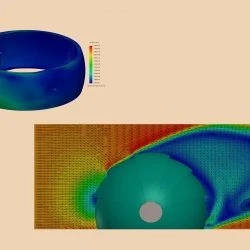A dome houses optical telescopes and protects the fragile components from the weather elements. Telescope domes have a slit or an opening in the ceiling that you can unlock when observing and close when the telescope is not in use. You may rotate the entire upper piece of the telescope dome to allow the telescope to observe different sections of the night sky. The domes of observatories and the devices used for watching and managing have chemicals in their composition. Here are some functions that an astronomy dome serves.
Provide space for other amenities.
The dome will be around 80 meters high and 88 meters in circumference, with a footprint roughly like that of a football field. An astronomer can put a single telescope in an observatory dome, although some have more than twenty telescopes. This comprises the electromagnetic spectrum’s radio, infrared, and visible light (optical) sections. There are provisions for utilities such as cranes, control rooms, workshops, instrument storage, and aluminizing equipment.
Protect the telescope from weather elements.
The most complex telescope, ground-based astronomy, requires special protection. Protection is for its sensitive and delicate components. This is especially true in a harsh desert environment with potentially harmful sand and wind and a region prone to earthquakes.
Contractors construct an astronomical dome with either 0.7mm or 1.2mm thick stainless steel cladding. Contractors also make the load-bearing interior structure of stainless steel.
The dome shelters the telescope in windy weather and shields its delicate optical parts from the elements during the day. The primary function of a dome is to shield people from the elements, such as sunshine, humidity, rain, snow, dust, and wind. In addition, the dome blocks wind, and even neighborhood lights.
Provide a clear view of the sky.
A dome should, in addition to protecting the telescope, allow the telescope to access the entire sky. As a result, they must have some openings and be able to track with the telescope. Rolling roofs will enable you to see more of the sky. The upper portion of the astronomical dome will rotate, allowing the telescope’s huge observation slit to point in any direction. A complete cycle of the dome takes about 100 seconds, and the spherical shape with two sets of interleaved shutters allows the entire sky to be visible when the dome is open. This eliminates the requirement for dome rotation and tracking.
Remove the temperature difference between the interior and exterior.
The dome enclosure includes an aluminum thermally insulated covering. The covering provides thermal conditioning for the telescope chamber during the day. The exterior also limits radiative cooling at night. After that, the contractors line the dome with plastic-coated plywood panels or aluminum sheeting (in a color of your choice). This design component provides a visually beautiful, comfortable, and welcoming inside. The design component also ensures that the dome is thermally insulated from the outside world.
Astronomers use the dome to ensure telescopes are permanently mounted in the field. Domes also shield them from atmospheric effects, ensuring they are always ready to use! Besides, they come in various sizes, allowing you to design your astronomical observatory.
0


